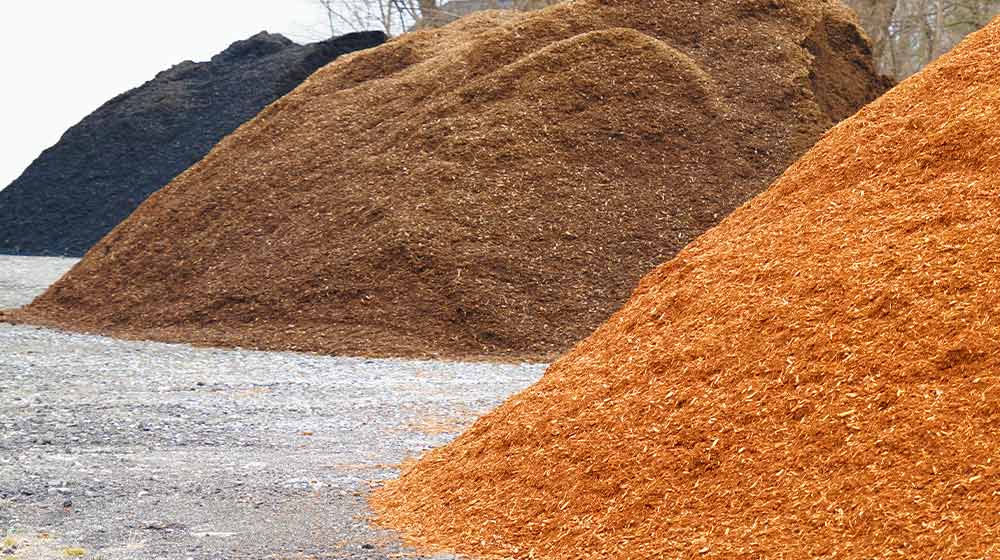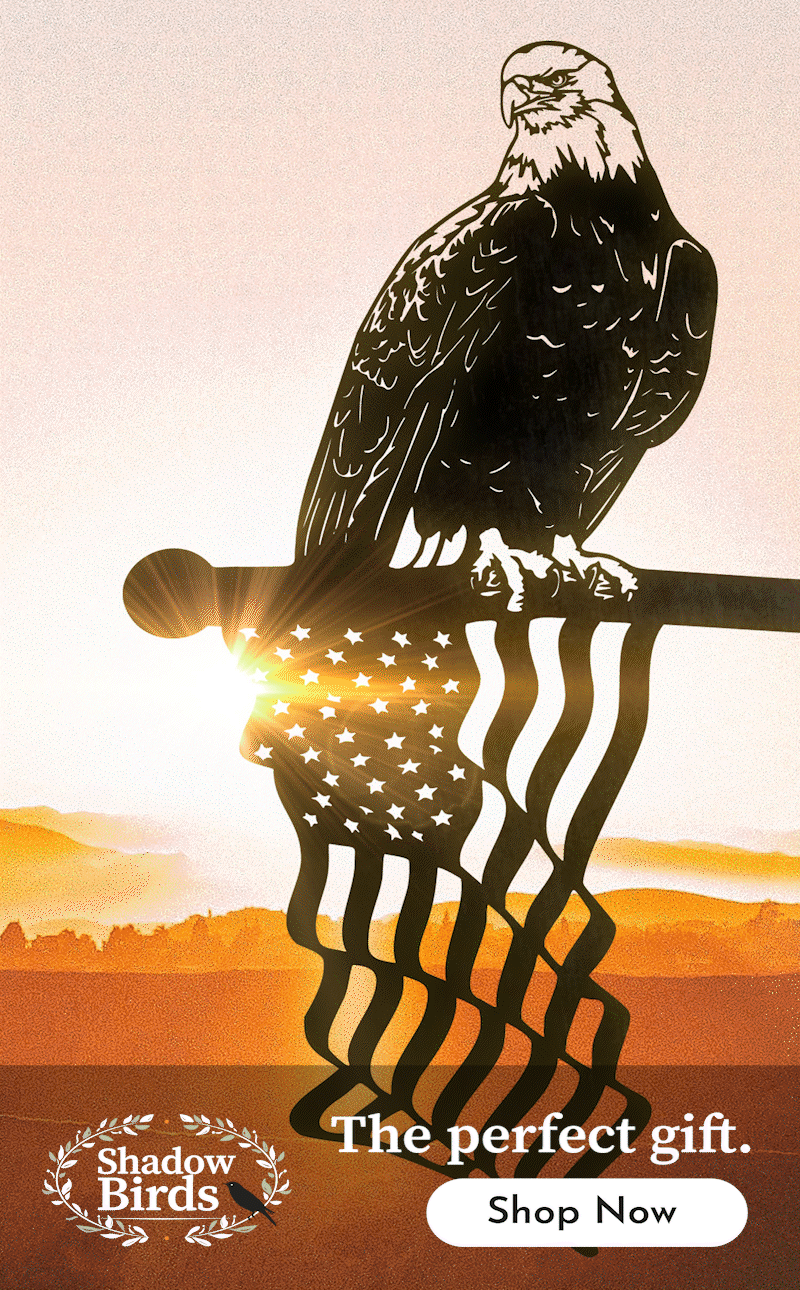Mulch is, more or less, an underappreciated jewel in gardens. So choosing the right mulch colors for your plants, or exterior is vital.
Learn with us and find out how to choose the right one for your garden.
In this article, you will find:
RELATED: 17 Summer Landscape Ideas And Tips For Your Summer Garden
Everything You Need to Know About Choosing the Best Mulch Colors for Your Garden |FAQs
What Are the Available Mulch Colors
1. Brown Mulch
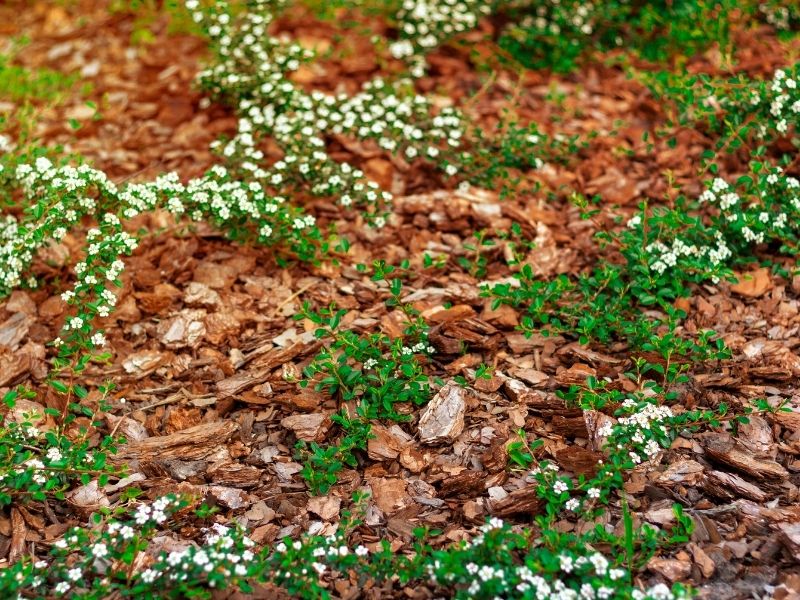
Brown mulch is a fresh touch to any garden, primarily because of how well it highlights both bright and dark-colored plants.
While brown color mulch is perfect for smaller areas, its luster is short-lived and lasts for a season at most. But it is still an excellent mulch color for any garden as it blends well with most shades of green.
2. Red Mulch
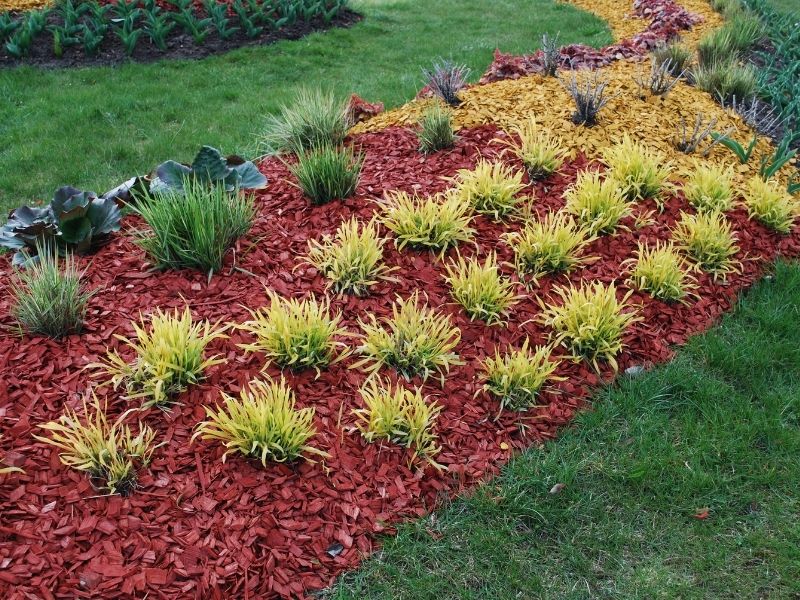
Though mostly used in commercial spaces, red mulch can also look great in your home garden, if paired with lighter-colored plants. Its vibrant red hue offers excellent contrast and looks great in rock gardens.
Red mulch decomposes quicker than other types of bark mulch because it is typically made from recycled chips of wood.
3. Black Mulch
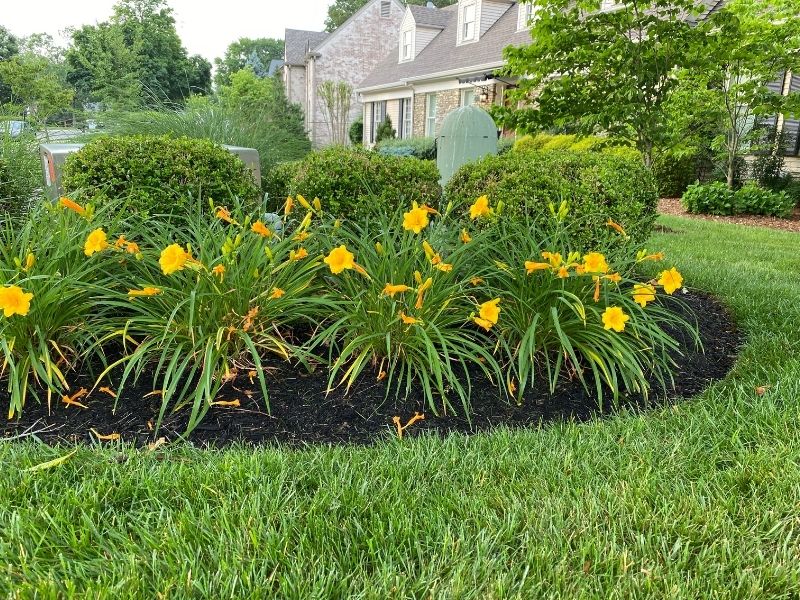
Like red mulch, black mulch is commonly used in commercial areas mainly because of its long-lasting color. While this mulch color checks all the aesthetic boxes, it is not ideal for delicate plants in hot climates because of its ability to absorb and retain heat.
However, in colder climates, black mulch is a perfect color to go for.
What Are the Different Types of Mulch
1. Cypress Mulch
[instagram url=https://www.instagram.com/p/B-wC14tl-X_/ hidecaption=true width=600]
Though it can be a bit expensive, cypress mulch is especially loved because of its beautiful blonde color. Harvesting cypress, however, comes with significant environmental implications.
Tip: Cypress will repel the useful insects, like worms that can help add soil fertility.
2. Cedar Mulch
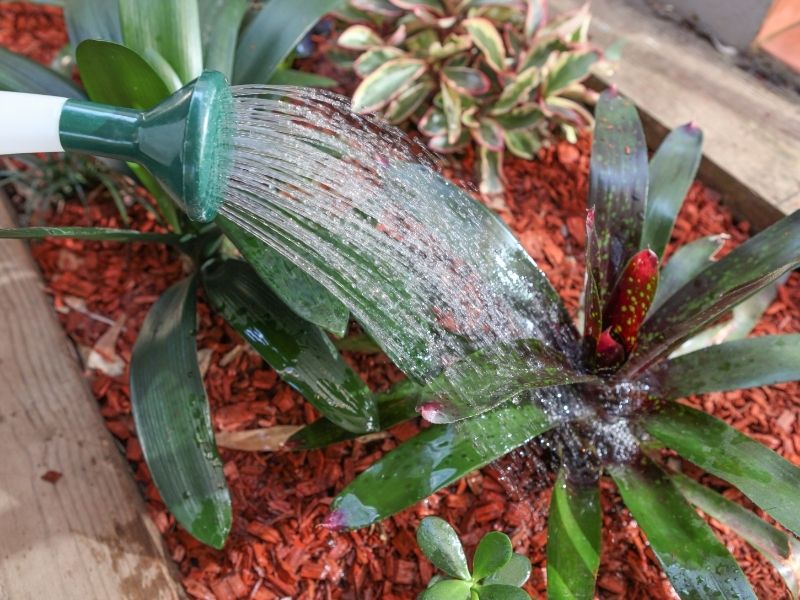
Cedar is a natural type of red mulch that can be safely dyed to brown, black, or a brighter shade of red with organic, vegetable, or soy-based dyes.
Tips
- Cedar doesn’t decompose quickly and adds only small amounts of nutrients to the soil at a time.
- Cedar is a natural insect repellent and will discourage even useful insects such as ladybugs and worms from improving the soil.
3. Straw Mulch
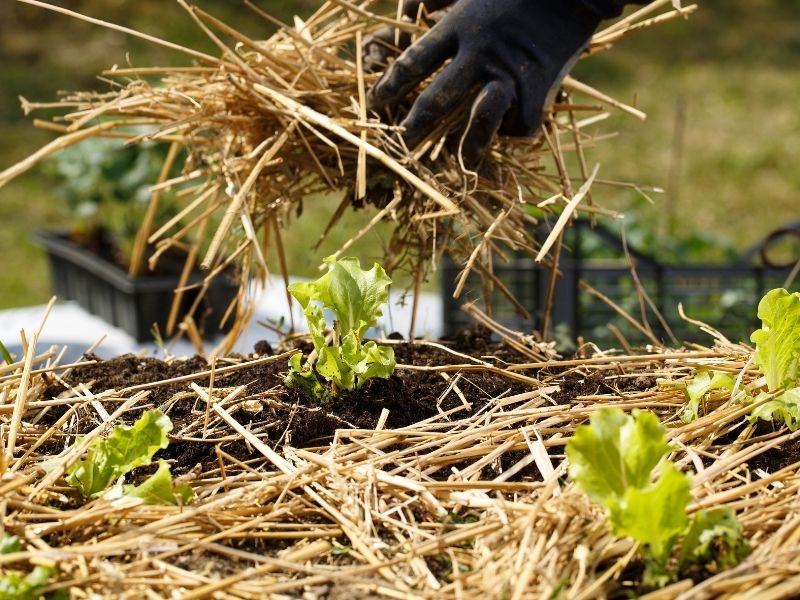
Straw mulch is certainly not the prettiest, but it can add an exciting flair when placed correctly. Also, it is ideal for winter projects because it is one of the most excellent insulators available.
Reminder: Straw mulch requires a high quantity of nitrogen to decompose. If your soil is not rich in nitrogen, straw can rob the nutrients from your plant.
4. Sawdust Mulch
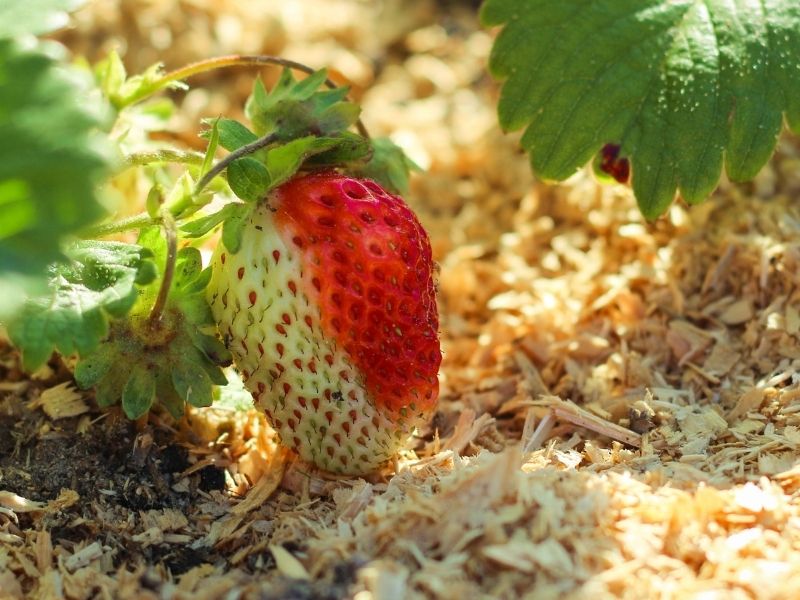
Sawdust is the cheapest way to get a beautifully landscaped garden that retains moisture well and is weed-free.
Tips
- Like straws, it’s advisable to add nitrogen to your sawdust mulch mixture to enable it to decompose without stealing nitrogen from your plants.
- Sawdust adds acidity to the soil and will be suitable for acid-loving plants like strawberries and juicy blueberries.
5. Bark Mulch
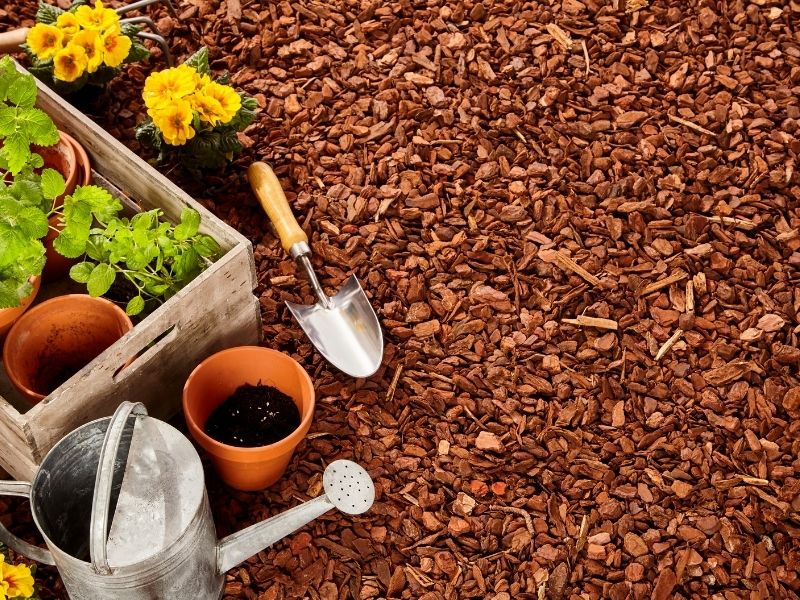
Bark mulches are especially loved because of their textures and vibrant colors. These mulches trap moisture as quickly as they let water and air travel freely to the soil.
Larger bark chips take longer to decompose; hence do not require frequent replacement. And having come from various trees, they offer several nutrients that work well with individual plants.
Pro tip: Bark mulch is your all-season mulch as it does a great job cooling plants during summer and insulating them during winter.
6. Pine Straw Mulch
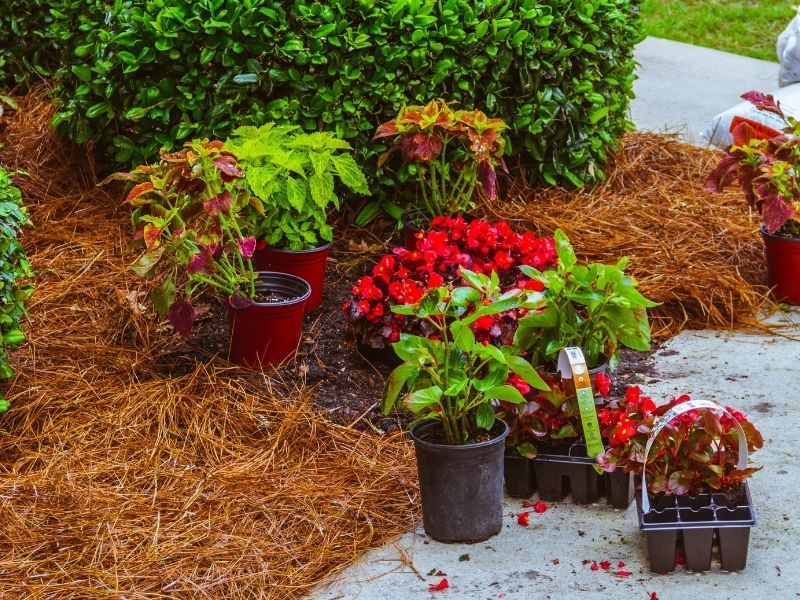
Native to the South, pine straw mulch decomposes slowly and holds together well, making it ideal for sloping gardens.
Reminder: Pine straw adds acidity to the soil, making it effective for acid-loving plants such as blueberries.
7. Grass Or Leaves Clippings
[instagram url=https://www.instagram.com/p/CCUtVgwFcrd/ hidecaption=true width=600]
Have leaves or grass clippings lying around? Make yourself cheap and convenient mulch using any of these.
RELATED: Everything You Need To Know About Bokashi Composting
How to Choose the Right Mulch Colors
Step 1. Consider the Types of Plants You Will Be Mulching
[instagram url=https://www.instagram.com/p/CF-cAZoBGxq/ hidecaption=true width=600]
Considering the plants you will mulch is the next thing to have in mind after choosing the most favorable mulch colors. This will help you determine if the plant’s color and the mulch type combination works.
Also, you get to figure out whether the mulch type you are going for is enabling for your specific plants or not.
Pro tip: Steer clear of treating grass, especially if you are using the mulch on edibles.
Step 2. Choose Mulch Colors That Blend With Your Exterior
[instagram url=https://www.instagram.com/p/CCQ1PjYFOIg/ hidecaption=true width=600]
Secondly, settle for a few mulch colors that will complement your home’s exterior. Go for mulch colors that will create consistency with the already existing stones and bricks.
Say for instance, you have a dark roof and brick. A dark brown mulch will blend well with your exterior while highlighting your bright colored flowers and plants.
Mulching Tips
- Ideally, add a 3-inch layer of mulch to your garden.
- For a new garden, you will need to use weed fumigant, landscape fabric, soil, and top with mulch.
- If you’re having a hard time figuring out the mulch color that will work for you, try looking at other people’s gardens and lawns for inspiration.
Watch this video from Sam’s Kitchen Gardening on how to mulch your plants during Summer:
[youtube https://www.youtube.com/watch?v=pX4mhQ9zJOU&w=800&h=375]
With these, fellow green thumbs, you have a cheat sheet on how to go with your mulch for aesthetics and plants’ needs in mind. I hope you’ll have a wonderful and effective garden landscaping this season.
Have fun gardening with your favorite mulch colors this summer!
Aside from mulching, how else are you taking care of your plants in this heatwave? Let us know by leaving a comment below!
Up Next
- 13 Ways On How To Save On Water Bill | Smart Gardening Tips
- What’s The Best Time To Water Plants During Summer Time
- How To Build A Wick System For Your Hydroponic Garden
Calling all green thumbs, Garden Season needs YOU! Click here if you want to write for us!
Want to stay up to date? Follow Garden Season on Facebook, Twitter, Instagram, and Pinterest.

